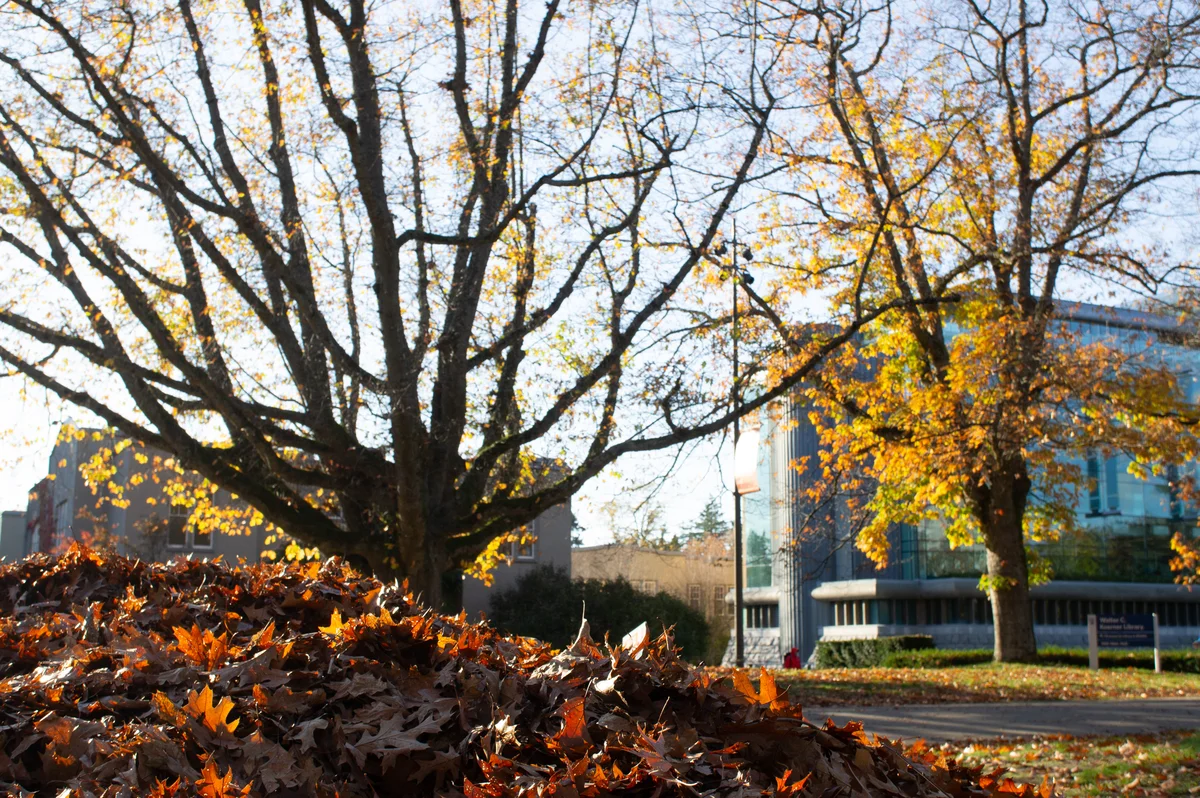
On a clear summer day on campus, Oliver McDermott grabbed the tree branch and started to shake it furiously until a cloud of dust, dry leaves and insects rained down into an upside-down umbrella. He raced to preserve the tree's detritus in a vial. An average day on the job for the research assistant, McDermott spent the summer collecting data on how tree species on campus impact insect and microbial biodiversity.
Now, in October, trees from Northern Red Oak to Japanese Maple are shedding their vibrant leaves. But why were those tree species planted and what impact do they have on the less visible communities of microbes and insects that coexist with them?
These are questions explored by researchers for CTMAIN: Campus Trees, Microbes and Insects. CTMAIN is a Campus as a Living Lab project, funded by UBC to explore sustainability interventions for campus and potentially on a city-wide scale.
“[We] took advantage of the tree database that UBC has,” said study lead Michelle Tseng, an assistant professor in the Botany, Zoology and Biodiversity Research Centre. “We’re interested in the different [tree] species … and what biodiversity these trees support on campus.”
Although the presence of any tree helps to shade streets and clean air, urban planning often does not account for the tradeoff between tree species and the consequences they might have on biodiversity.
“A lot of trees were previously planted because they're either fast-growing or easy to maintain, or have a growth form that we think are pretty,” said Devlin Grewal, a research assistant with the study.
Selected carelessly, trees do little to stop the steady decline of insect populations.
“Insects around the world are disappearing because of lack of habitat,” said Tsend. “Part of that could be due to the fact that we just plant urban trees at random.”
Being mindful of tree species can be a crucial strategy for preserving the life they carry. Maintaining diverse ecosystems allows for greater adaptation to changing environmental conditions.
Research assistants like McDermott and Julie Seig have been taking samples of trees around UBC to find how many insects make a home in their leaves.
They found that tree location makes a big difference in insect abundance. Although they haven’t finished analyzing data, Seig observed fewer insects on trees near more heavily trafficked areas like]the bus loop.
“We don't know if it's a result of the environment, or the tree being non-native, but we did definitely see the difference in the amount of biodiversity,” she said.
Trees with minimal insects can experience challenges such as reduced pollination.
Studies like CTMAIN create opportunities for conversations between scientists, urban planners and landscape managers for more environmentally conscious arrangements.
“Especially in light of climate change, we’re going to see … [more] extreme events,” said Grewal. Planting trees with biodiversity in mind can help insects and cities weather those storms.


